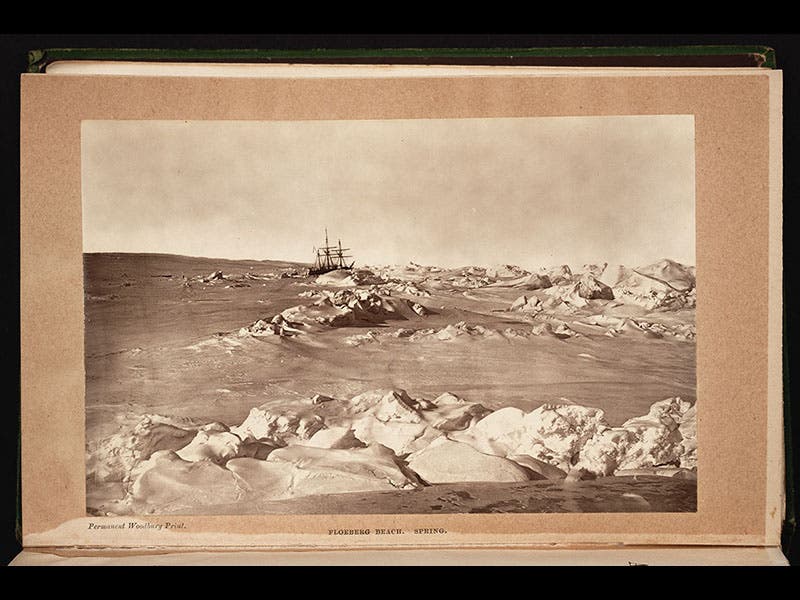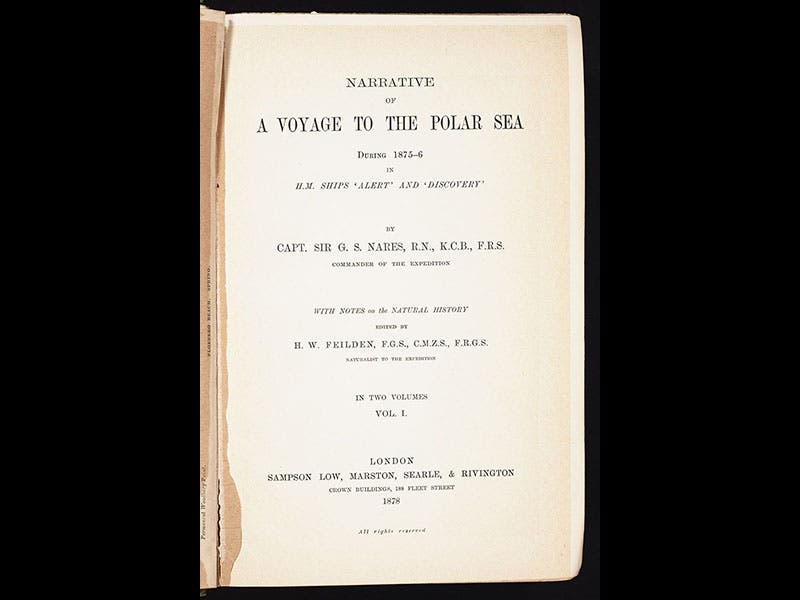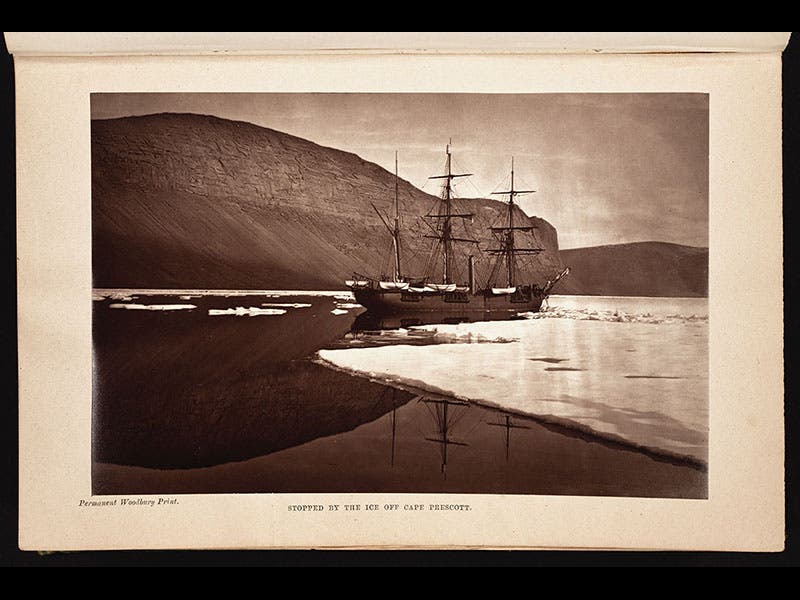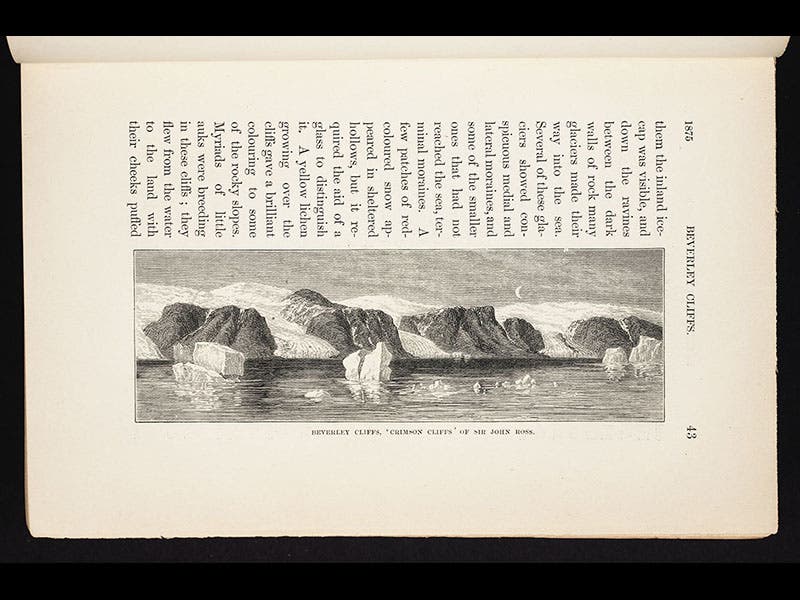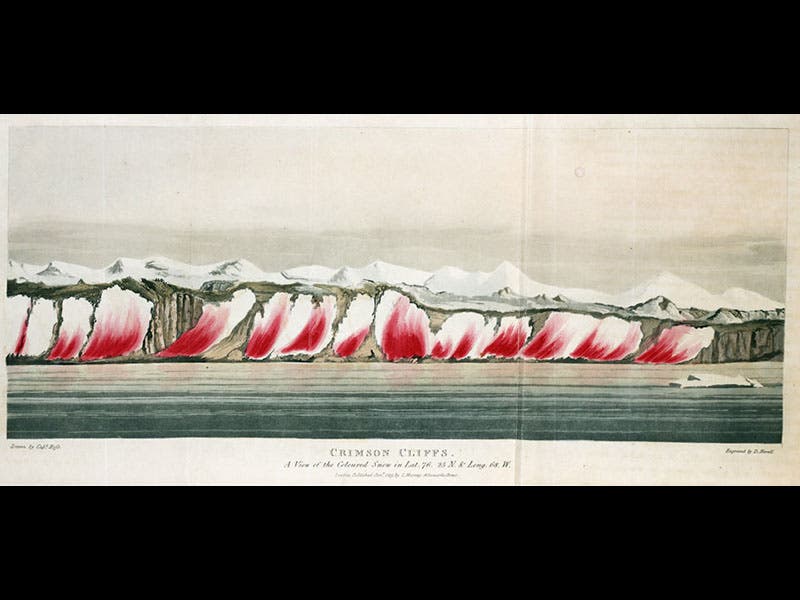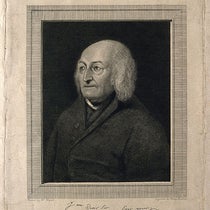Scientist of the Day - George Nares
George Strong Nares, a British naval officer and explorer, died Jan. 15, 1915, at age 83. Nares was the commander of the Challenger expedition, 1872-76, the hugely successful scientific voyage that, through world-wide soundings and dredging, greatly enlarged our knowledge of the deep-ocean floor in both the Atlantic and Pacific Oceans. Today, however, we focus on Nares’ next, and less distinguished, voyage of exploration. In 1875, Nares set off in two ships, the Alert and the Discovery, to attempt to reach the North Pole by sailing up the western coast of Greenland. Many at that time still believed in the existence of an Open Polar Sea, which, if one could reach it, would provide easy ship access to the North Pole. Nares took his ships up through the strait that separates Greenland from Ellsemere Island (now called the Nares Strait), but they found no Polar Sea; there was instead–surprise–nothing but increasingly colder ice. A sledge expedition did made it to 83° 20’ N, a record at the time, but otherwise the expedition was a complete bust, and Nares even came home early–a real no-no for a British naval officer–since many of his men were suffering from scurvy, in spite of the fact that it was by now well-known how to prevent scurvy. The major impact of the expedition was to make the British swear off further Arctic expeditions for the next quarter of a century. In spite of his lackluster performance, but in keeping with the best spirit of the Peter Principle, Nares, upon his return, was given awards by all sorts of scientific societies, made a knight commander of the Order of the Bath, and eventually promoted to Vice-Admiral.
The Library recently acquired the two-volume Narrative of a Voyage to the Polar Sea (1878), written by Nares. The first five images above are all from this work. This was one of the first books on Arctic exploration to be illustrated primarily by photographs, and one of the perhaps unintended results was to show how bleak the Arctic really is. Most of the earlier books on the search for a Northwest Passage had been illustrated with hand-colored engravings and chromolithographs, which made the northland look positively inviting. Not so with the photographs in Nares’ Narrative. There are also a number of wood engravings in the book, and we show one (fifth image) that depicts a stretch of cliffs that, the caption tells us, had been earlier visited by Sir John Ross. This gives us an excuse to display an earlier hand-colored engraving, from Ross’s account (1819) of his visit to the Crimson Cliffs (sixth image), and you can see what we mean about the false charm of early depictions of the Arctic.
Dr. William B. Ashworth, Jr., Consultant for the History of Science, Linda Hall Library and Associate Professor, Department of History, University of Missouri-Kansas City. Comments or corrections are welcome; please direct to ashworthw@umkc.edu.


